The Supreme Court on Tuesday seemed likely to preserve access to a medication that was used in nearly two-thirds of all abortions in the U.S. last year, in the court’s first abortion case since conservative justices overturned Roe v. Wade two years ago.
Quick Read
- Supreme Court’s Stance on Abortion Medication: The Supreme Court appears inclined to maintain access to mifepristone, used in the majority of U.S. abortions, after questioning the legal standing of the anti-abortion groups challenging the FDA’s approval and relaxed access measures.
- Current Mifepristone Regulations: The Biden administration’s rules allow mifepristone to be mailed and taken up to 10 weeks into pregnancy, without a mandatory in-person doctor’s visit, which could remain unchanged following the Court’s decision.
- Legal Standing Concerns: Even conservative justices questioned whether the plaintiffs have suffered direct harm from the FDA’s actions, a key criterion for legal standing, suggesting the case could be dismissed on these grounds.
- Impact of Limiting Access: If the court sides with abortion opponents, it could lead to significant restrictions on mifepristone, affecting its delivery, usage timeframe, and the availability of telehealth prescriptions.
- FDA Approval and Safety: The FDA and Danco Laboratories argue that mifepristone is one of the safest drugs approved, countering claims that eased restrictions compromise women’s health.
- Potential Outcomes: The Court might resolve the case by addressing the standing issue, thus avoiding broader political and regulatory implications while keeping current access to mifepristone intact.
- Broader Context: This case marks the Court’s first abortion-related decision since overturning Roe v. Wade, occurring amid heightened political sensitivity and upcoming arguments on related issues.
The Associated Press has the story:
Supreme Court seems likely to preserve access to abortion medication
Newslooks- WASHINGTON (AP) —
The Supreme Court on Tuesday seemed likely to preserve access to a medication that was used in nearly two-thirds of all abortions in the U.S. last year, in the court’s first abortion case since conservative justices overturned Roe v. Wade two years ago.
In nearly 90 minutes of arguments, a consensus appeared to emerge that the abortion opponents who challenged the FDA’s approval of the medication, mifepristone, and subsequent actions to ease access to it lack the legal right, or standing, to sue.
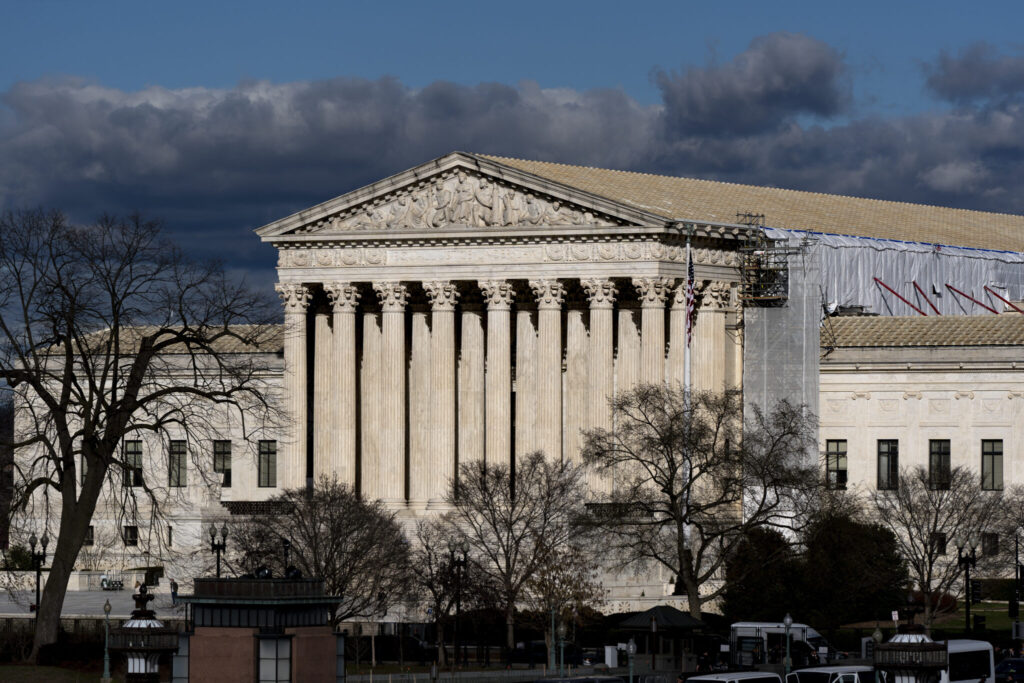
Such a decision would leave the current rules in place that allow patients to receive the drug through the mail, without any need for an in-person visit with a doctor, and to take the medication to induce an abortion through 10 weeks of pregnancy.
Solicitor General Elizabeth Prelogar, the Biden administration’s top Supreme Court lawyer, said the court should make clear that the anti-abortion doctors and organizations that challenged the FDA’s relaxation of restrictions on mifepristone don’t “come within 100 miles” of having the legal right, or standing, to sue.
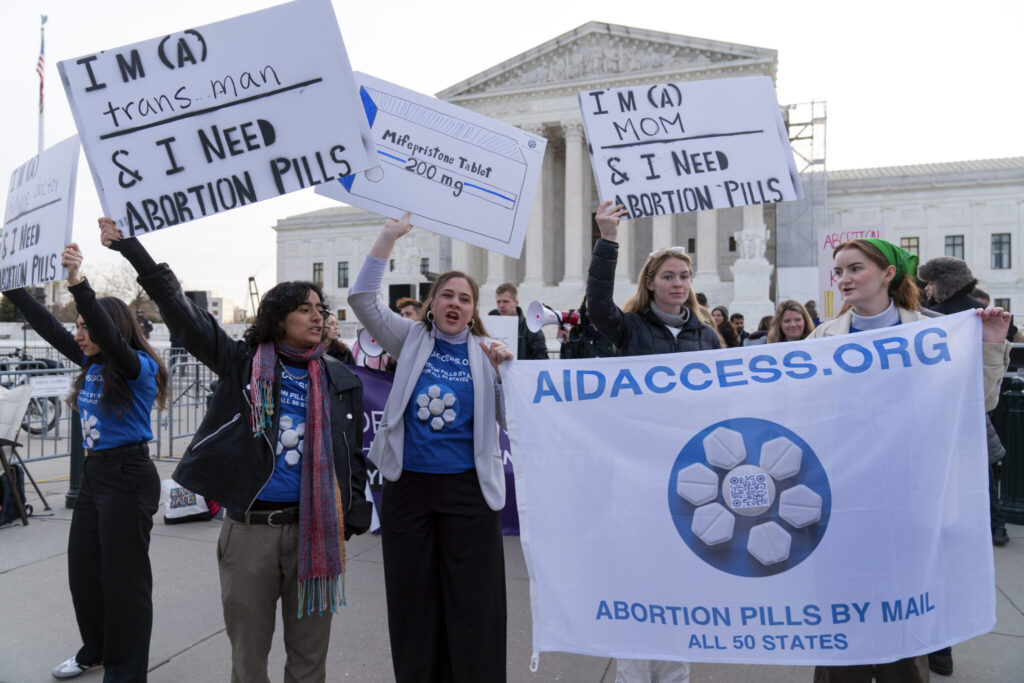
Even three justices who were in the majority to overturn Roe posed skeptical questions about standing to the lawyer for the abortion opponents. Justices Amy Coney Barrett, Neil Gorsuch and Brett Kavanaugh are former President Donald Trump’s three Supreme Court appointees.
Barrett, for example, seemed to doubt that the doctors identified by lawyer Erin Hawley could show that were actually harmed by the FDA’s actions, one of the requirements for showing standing.
“The difficulty, to me, is that the affidavits do read more like conscience objections,” Barrett said.
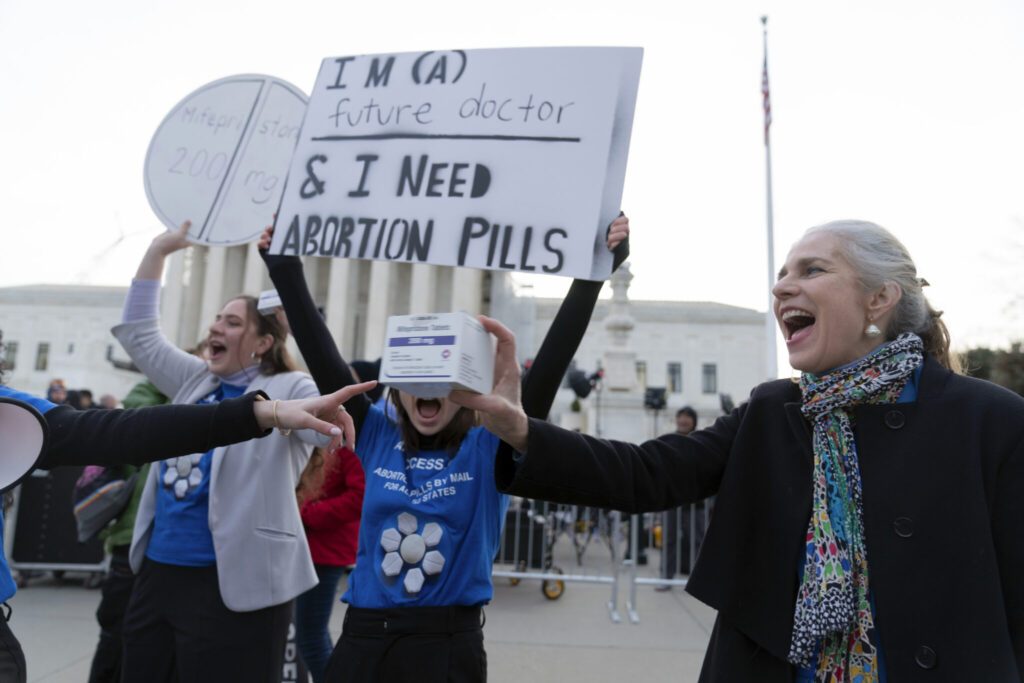
Abortion opponents are asking the justices to ratify a ruling from a conservative federal appeals court that would limit access to mifepristone, one of two drugs used in medication abortions.
The high court’s return to the abortion thicket is taking place in a political and regulatory landscape that was reshaped by the abortion decision in 2022 that led many Republican-led states to ban or severely restrict abortion.
That ruling had immediate political consequences, and the outcome in the new case, expected by early summer, could affect races for Congress and the White House.
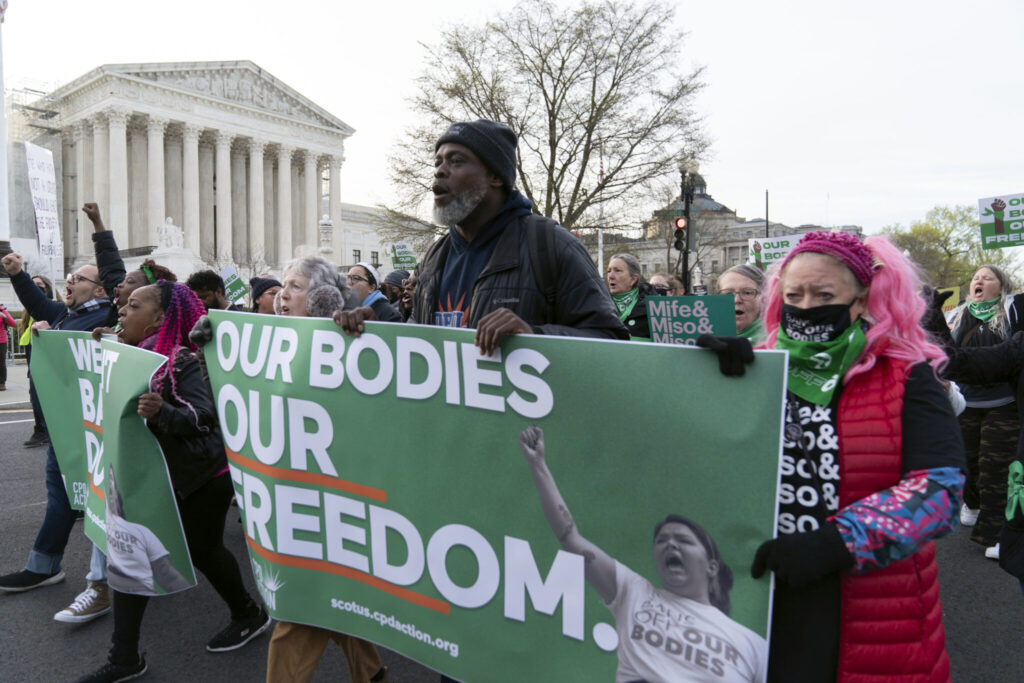
The scene outside the Supreme Court was lively Tuesday morning, with demonstrators occupying the streets surrounding the court and groups on both sides of the issue marching and chanting. The police blocked traffic surrounding the court as well.
The practical consequences of a ruling for abortion opponents would be dramatic, possibly halting the delivery of mifepristone through the mail and at large pharmacy chains, reducing the period in pregnancy when it can be used from 10 to seven weeks and ending increasingly popular telehealth visits at which the drug can be prescribed.
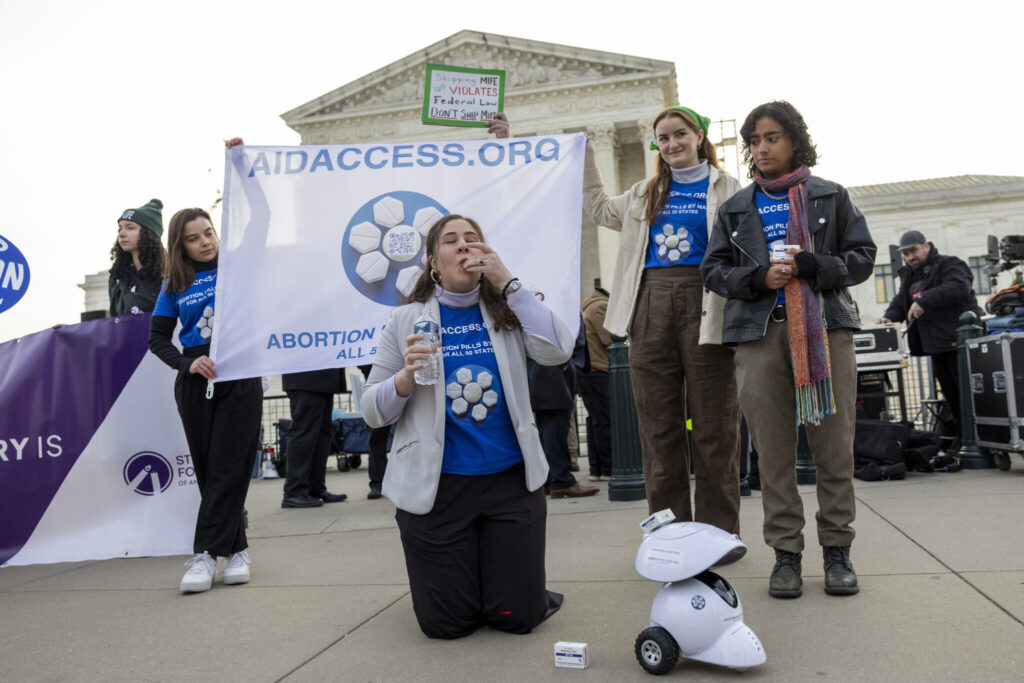
President Joe Biden’s administration and drug manufacturers warn that such an outcome also could undermine the FDA’s drug approval process more widely by inviting judges to second-guess the agency’s scientific judgments.
Anti-abortion doctors and medical organizations argue that the FDA’s decisions in 2016 and 2021 to relax restrictions on getting the drug were unreasonable and “jeopardize women’s health across the nation.” The Democratic administration and New York-based Danco Laboratories, which makes mifepristone, respond that the drug is among the safest the FDA has ever approved.
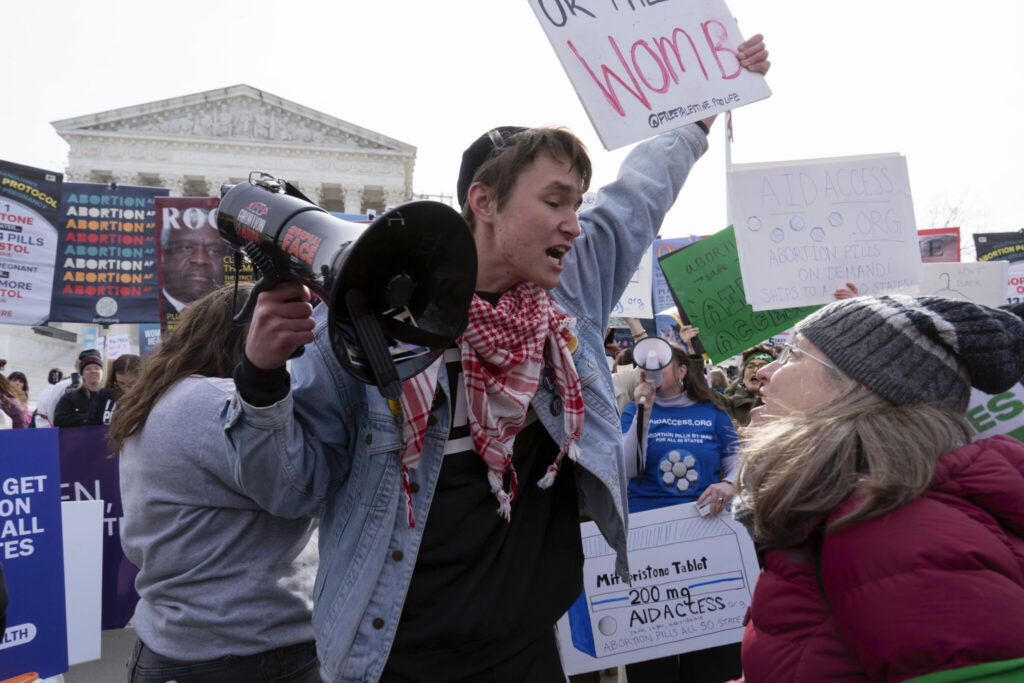
In one possible resolution, the justices could avoid touching on the more politically sensitive aspects of the case while preserving access to mifepristone. The administration and Danco argue that the challengers lack the legal right, or standing, to sue. If the high court agrees, it would essentially dismiss the case and erase the appellate ruling.
Another abortion case already is on the docket. Next month, the justices will hear arguments over whether a federal law on emergency treatment at hospitals must include abortions, even in states that have otherwise banned them.
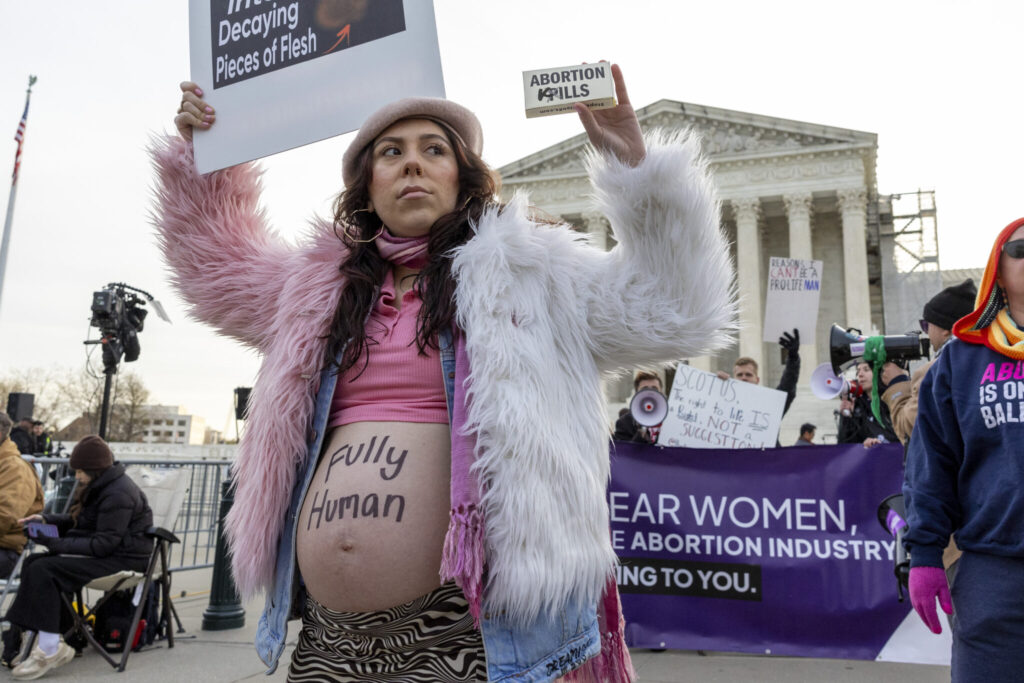
The mifepristone case began five months after the Supreme Court overturned Roe v. Wade. Abortion opponents initially won a sweeping ruling nearly a year ago from U.S. District Judge Matthew Kacsmaryk, a Trump nominee in Texas, which would have revoked the drug’s approval entirely. The 5th U.S. Circuit Court of Appeals left intact the FDA’s initial approval of mifepristone. But it would reverse changes regulators made in 2016 and 2021 that eased some conditions for administering the drug.
The Supreme Court put the appeals court’s modified ruling on hold, then agreed to hear the case, though Justices Samuel Alito, the author of the decision overturning Roe, and Clarence Thomas would have allowed some restrictions to take effect while the case proceeded.
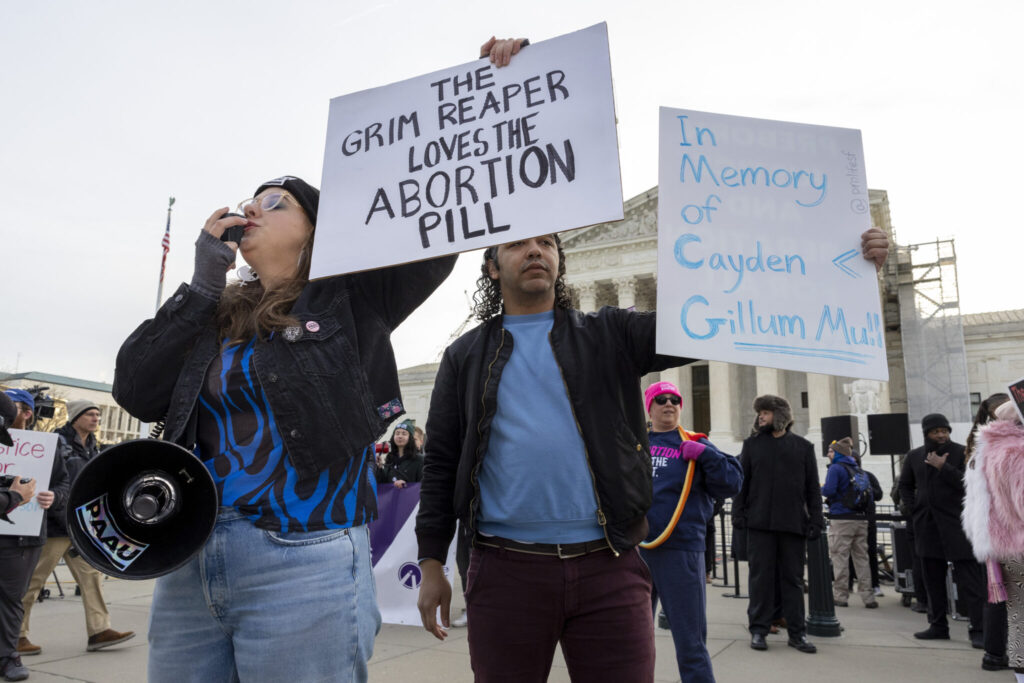
Mifepristone is one of two drugs, along with misoprostol, used in medication abortions. Their numbers have been rising for years. More than 6 million people have used mifepristone since 2000. Mifepristone is taken first to dilate the cervix and block the hormone progesterone, which is needed to sustain a pregnancy. Misoprostol is taken 24 to 48 hours later, causing the uterus to contract and expel pregnancy tissue.
Health care providers have said that if mifepristone is no longer available or is too hard to obtain, they would switch to using only misoprostol, which is somewhat less effective in ending pregnancies.






